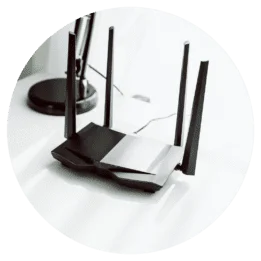

A number of common terms are used throughout this toolkit and by broadband providers. These include:
Bandwidth: The amount of information you exchange over a connection in a specific amount of time. The more devices being used at the same time, the more bandwidth needed.
Broadband: A wired internet connection into your home.
Broadband only tariff: A deal that only offers broadband internet services but does not offer other services, such as telephone or TV.
Broadband package or bundle: A deal that offers other services, such as telephone or TV, as well as broadband internet.
Cancellation fee: The cost a customer incurs to end their broadband contract early.
Device: In this toolkit, ‘device’ refers to any piece of equipment on which you can get online (e.g. desktop computer, laptop, tablet, smartphone).
Downloading: The transmission of a file or data from one device to another over a network (e.g. the text and images on a website). All internet use requires downloading data.
Fibre broadband: A type of high speed broadband that uses fibre optic cables.
Installation fee: The cost a customer has to pay to have broadband installed in their home.
Internet applications: Applications (sometimes known as ‘apps’) that use the internet to operate successfully (e.g. Outlook, Instagram, Spotify, Netflix).
ISP: Internet Service Provider (the company who provides the internet in your home – e.g. BT, Virgin Media)
Landline: A phone that uses a telephone line to make and receive calls. Unlike mobile phones, it has to be connected to wiring to work.
Mbit/s: Short for megabits per second, it refers to upload and download speeds. The higher the number of Mbit/s, the faster the connection.
Modem: A modem is used to connect a local network (e.g. your home network) to the internet. One device can also use a modem to connect to the internet.
Router: A router creates a local network between the devices in your home. This allows multiple devices to access the internet at the same time. Many internet providers will provide a combined modem and router.
Streaming: Any data being delivered via the internet to devices that can be accessed by the user in real time (e.g. podcasts, TV shows). Netflix is an example of a streaming service.
Uploading: Transferring data from a device to the internet (e.g. transferring a photo from your computer to Facebook).
Wi-Fi: This connects your devices to the internet wirelessly.